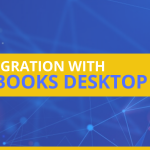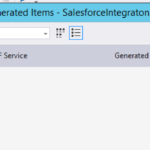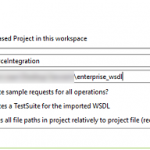5 Key Capabilities of an EDI Platform
B2B supply chains will keep expanding, given the enormous scale of niche suppliers entering into existing B2B supply chains. As the number of suppliers and customers of large B2B firms keep growing, so does the fragmentation of data that resides across the whole supply chain. This is where the integration of EDI will help you connect with you supplier’s supplier and your customer’s customers. EDI integration eliminates the data loss and data redundancy incidents that are a norm in fragmented supply chains. When implementing the EDI integration solution, seek the following capabilities from your vendor.
BROAD INTEGRATION SUPPORT
If your vendor is implementing an EDI integration solution, for example using the top of industry standard EDI engines such as Microsoft BizTalk Server or the IBM Websphere, your EDI should be able to communicate, in parallel, with suppliers, customers, warehouses, logistics department, banks and telecommunication providers. Following list will help you to determine what capabilities you should obtain through a broad integration support.
Suppliers: Send purchase orders and receive invoices from suppliers
Customers: Send invoices and receive purchase orders
Warehouses: Fast goods movement, receive shipment notifications in advance and obtain inventory queries
Logistics: Loading of goods and dispatch of shipments
Banking partners: Obtain payment receipts and auto-initiate payments
Telecom providers: Obtaining e-Receipts & transaction details
LOW-COST & OUT-OF-THE-BOX CONNECTION OPTIONS
The EDI integration solution you intend to implement mustn’t restrict the connectivity of your EDI to multiple gateways and back-end systems. The solution you implement should allow your EDI to connect with the following:
Integration Standards & Gateways: Rosettanet, X12, EDIFACT, AS2, ebXML, SWIFT, FIX, HL7, HIPAA, PIDX, CIDX, MISMO, SADAD, US Customs ABI/ACE Standards, ADP Open Invoice, Cortex , GS1
Back-end Systems:
- ERPs , xRMs: EPICOR, ADP Taxware, Dynamics, SAP, Sage X3, Oracle EBS, Salesforce, SugarCRM, AccountMate, PeachTree
- IBM: DB2, Mainframe CICS, MQ Series
- Cloud: Cortex, ADP, Elemica, LinkedIn, Facebook, ADP, Basware
- Banking: MiSys Equation, TCS BANCS, BankTrade
PROVISION OF CENTRALIZED DASHBOARD
Your EDI integration solution should also deliver a centralized dashboard providing you with a single point of view for organization’s internal departments and connected vendors. The dashboard is critical for managing vendor parameters including:
- Metadata Mappings of the Vendor
- Technical Information (DUNS number & Connection Credentials)
- Policy and Contract Information
- Audit of Transactions associated with your vendors
DATA ANOMALY SUPPORT
The solution you implement must deliver complex fuzzy matching support for detecting outliers and data anomalies. Often, without having the fuzzy matching support, it becomes complicated to trace products whose names have been misspelled during typing.
Error handling and anomaly detection are important features that allow vendors and customers to view transactions that are marked as exceptions.
DATA REPORTING
The dashboard, delivered by the solution provider, should be fully integrated with a comprehensive data capture and reporting module. It allows users to track data flowing between partners and extract key information from the data payload. Other benefits that dashboard should deliver are:
Transaction Information: Invoices, POs (searched through invoice content). Most important and on-going information that users require are the functional and technical acknowledgements received from partners
Aggregated Information: Using the data reporting dashboard, you should be able to view total invoice amount, posted during the day by the AP employees. User editable charts are also within this dashboard
Scheduling Tools: The scheduling tools that reside within the dashboard enable you to schedule emails as reports to assigned users. You can also send alerts when specific data conditions are met.
LESSONS LEARNED
EDI integration eliminates data loss and system redundancy incidents, thus connecting your supply chain with your supplier’s supplier and your customer’s customer. When you implement the EDI integration solution, seek following deliverables from your integration vendor.
- Broad Integration Support
- Low-Cost Connection Options
- Centralized Dashboard
- Data Anomaly Support
- Data Reporting Capability







